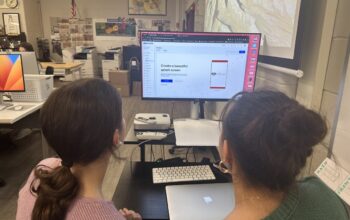The Issue: What are the roles and responsibilities of media in
covering and following real-time news?
Marcus Hijkoop & Sara Levine
Editors-in-Chief
If you followed the Boston Marathon bombings in real-time, you may have seen the above headline on the New York Post’s homepage. “Suspect ID’d as Saudi national.” Wrong. “Two unexploded devices found at site.” Wrong. “12 dead.” Wrong.
Many professional news organizations, such as CNN and the Post, were criticized for competing in “me first” journalism and battling for views, clicks and retweets. CNN’s John King was one of the first reporters to be criticized for falsely reporting that a “dark-skinned male” suspect had been arrested within an hour of the incident.
Soon after, the Post, citing Fox News, reported that the suspect had been identified as a “Saudi National” and that there were “12 dead” rather than the two confirmed. Three days later, the tabloid ran a cover falsely accusing two pictured “BAG MEN,” including Moroccan-American high schooler, Salah Barhoun, of being sought by the FBI.
Although 80 percent of Americans who followed the events did so through traditional new sources, according to a report from the Pew Research Center, around one in four got information about the bombings and subsequent manhunt on social networking sites such as Facebook and Twitter.
While most major news organizations are active on social media, many unprofessional reporters took matters into their own hands by releasing information from sources of varying credibility, from the public Boston Police Department (BPD) scanner to video taken by residents of Laurel St., MA, where the shootout between the BPD and Tsarnaev brothers took place.
Some members of the public even took the criminal investigation into their own hands. Crowdsourcing groups reported through social news and media sites, such as Reddit, that missing Brown University student, Sunil Tripathi (pictured left), strongly resembled one of the suspects in the released FBI stills.
At one point, Sunil’s name was even on Twitter’s top trends list. The FBI later refuted those claims and released updated photos of suspects Dzhokhar and Tamerlan Tsarnaev. Within a week of Dzhokhar’s capture and Tamerlan’s death, Sunil’s body was found only a mile away from his dorm room in Providence, R.I.
Within the last decade alone, staying informed has become as easy as pressing a button. According to Pew, 63 percent of Americans closely followed the bombing-related events, making it one of the biggest news stories since 9/11. In the past decade, however, the way in which news is reported has expanded to include the public with the implementation of social media.
Both social and news media have the responsibility to cover real-time news without sacrificing ethics. When that responsibility is overlooked, however, it is left to the public to use discretion while following unconfirmed reports.




